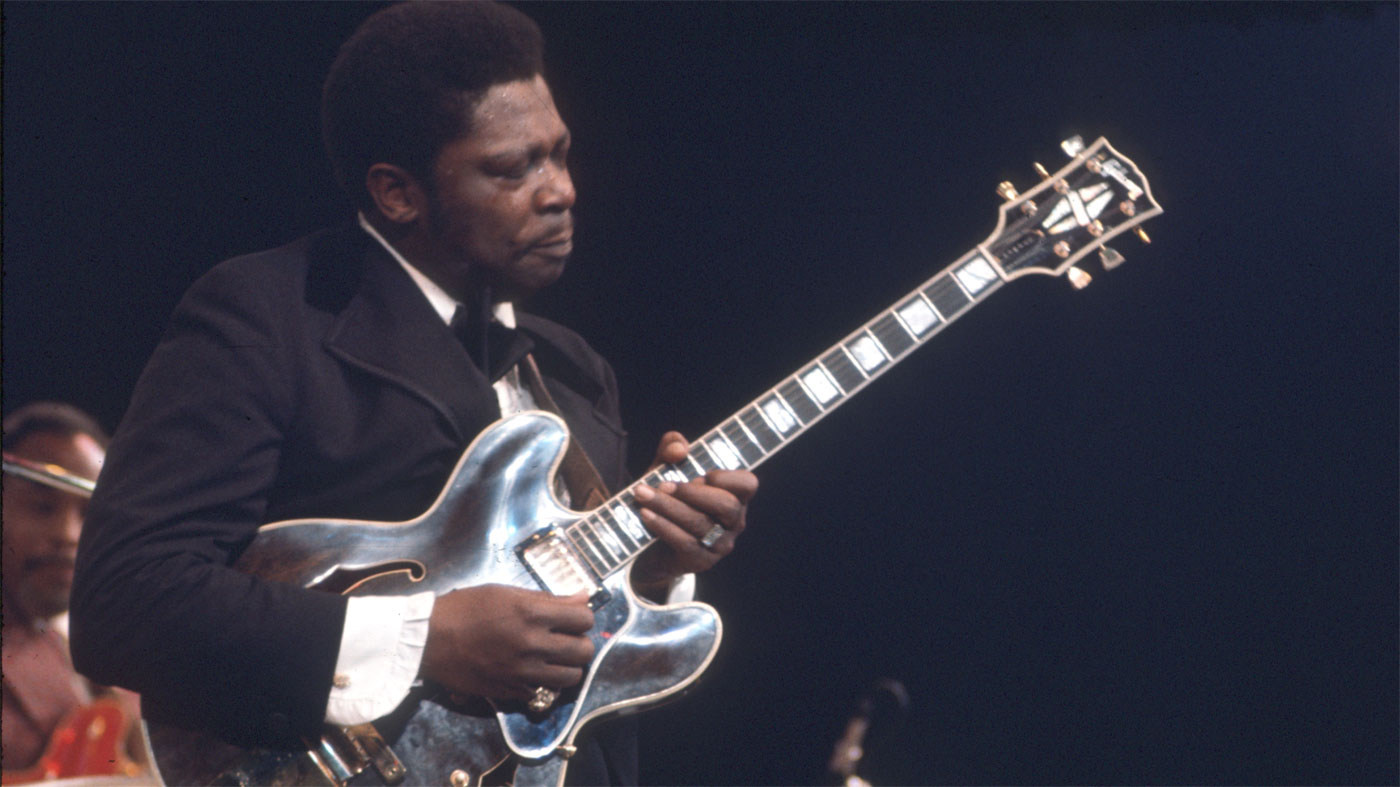Learn 5 classic blues guitar licks from Albert, Freddie and BB King, Stevie Ray Vaughan and Eric Clapton
This video lesson will give you some unbeatable blues

When you’re on the road to improving with your lead guitar skills, a great way to start getting new ideas and understanding just how scales work is to learn from the best of blues guitar. Take some licks from your favourite guitar players and guitar solos, break them down and look at how your idols use the same scales you’re in the process of learning.
Learning licks from some of the guitar greats can unlock a wealth of new information. It can help us see new note groupings, develop phrasing ideas, teach us about melody and way more.
Once you’ve learnt a lick from one of your favourite players, you can either transpose that lick to another key and use it as you see fit, or adapt it and put your own spin on it.
In this lesson we’re going to focus solely on blues licks and we’re going to look at five classic blues licks from iconic players that are great to use and learn from. All the licks featured are transposable and can easily be moved around the fretboard and used in any key.
1. Albert King – Born Under a Bad Sign
Albert King, the King of the Texas blues. His influence can be heard far and wide – most notable in the playing styles of Stevie Ray Vaughan. Albert King was typically seen playing a right handed Gibson Flying V upside down as he was a left handed player, but without reversing the strings.
This mirror image approach to playing paved the way for some interesting phrasing ideas.
The opening lick from Born Under a Bad Sign is a classic blues lick that is a sure fire way to kickstart any great solo. It’s based in the first position of the C#min Pentatonic scale.
Want all the hottest music and gear news, reviews, deals, features and more, direct to your inbox? Sign up here.
This lick starts on the '&' of the first beat, this behind the beat approach gives it a laid back feel. You’ll be running down the scale with a few rolling movements where you play notes on top of each other, rather than running the scale in a linear fashion.
At the end of the lick you’ll be jumping to the second shape for a very typical Albert King-style ending.
2. BB King – The Thrill Is Gone
It’s hard to justify making any blues lick list without mentioning BB King. BB King is the undisputed master of blues phrasing. He can say and do more with a single note than more of us can do with a hundred.
This B Minor pentatonic lick is proof that you don’t need to play a lot of notes to make a great lick.

The lick starts with some sustained B notes with BB’s trademark fast but shallow vibrato style, before hitting a descending 1st shape pentatonic scale run.
When learning, and emulating the BB King guitar style, you’ll discover that a great deal of restraint is required in order to not overplay or add unnecessary notes to the pattern.
The BB King guitar style is built around choosing the perfect notes, using lots of space and leaning into minimalism. Let the guitar breathe and use the space as part of the phrasing.
3. Freddie King – Going Down
Freddie King is the third and final of the Three Kings of blues music. Freddie’s influence can be heard in players such as Eric Clapton. Eric borrowed a lot of Freddie King-style licks, especially in his earlier work with John Mayall & The Bluesbreakers and Cream.
The lick from Going Down we’re checking out here is quite an easy lick. It uses just a few notes from the second shape of the D minor pentatonic scale and all the lick really does is frame the riff that is taking place underneath it.
This minimal lick shows how effective rhythm and hooks can be in a solo. The riff has already planted itself in the listeners mind by the amount it’s repeated through the song, so mirroring this on the guitar in the solo is a great way to reintroduce that hook and keep the listener interested.
Freddie King’s guitar style was very choppy and staccato so when you’re playing this, listen to how he keeps the notes short and choppy. You don’t want it to sound too smooth, it should have an edge to it. Keep it raw and keep those notes short.
4. Stevie Ray Vaughan – Texas Flood
This is the most difficult lick in this lesson. It's in the key of G minor, but in the original version of the track, Stevie is turned down a semitone, but for the lesson, the lick has been recorded in standard tuning.
This lick is a speedy lick that runs through the first shape of the G minor pentatonic scale, but also introduces some additional notes along the way.
If you’re new to playing lead you may not know much about various scale types, especially modal scales and switching between different scale types of mid-solo, but inside this lick, there is some of that going on.
There are a few areas when you’ll add some notes from the natural minor scale, or the phrygian mode. It is not clear if Stevie knew he was doing this or if the lick was just a product of how he felt and the notes he chose to represent that.
You’ll also notice all the string bends are loose, and mostly under bent. This gives the lick a very slinky feel but also retains quite a raw, vocal quality to it.
5. Cream – Crossroads
This final lick is one of the fastest Eric Clapton licks on record. While Clapton was not known for his speedy virtuosity, he did have the chops to back it up and did prove this on multiple occasions, this being one of those.
The lick in question is in the key of A and switches between minor pentatonic and major pentatonic, a track Eric would have most likely taken from on of his idols, BB King.
The main note to keep an eye out for is the 6th fret on the G, this is the major 3rd, the note that creates that major tonality. The 5th fret on the G, that we’d expect to see in the minor pentatonic, is the minor 3rd.
Eric will add the major 3rd to some of his runs giving certain passages a major feel. You’ll notice it’s used a lot on the way to other notes, rather than a note that is hung on as a singular note for too long.
The 10 essential guitar riffs for beginners to learn
Leigh Fuge is a guitar player and content creator with a love for all things '80s. When he’s not creating gear demos for his Youtube channel he’s teaching students via his online guitar course Right Notes Music Tuition. Off camera he spends most of his time travelling around the UK performing at functions and corporate events. www.instagram.com/leighfugeguitar
